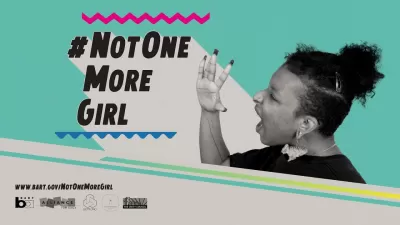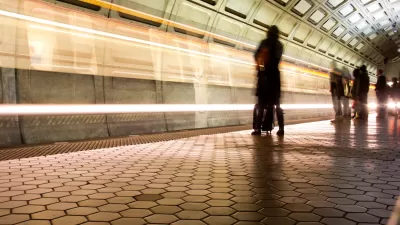The Washington Metropolitan Transit Authority (WMATA) recently launched a new campaign to combat sexual harassment and assault—especially toward some of the most marginalized members of the community.
"More people experience sexual assault on Metro trains and buses than you might think, and the victims are often women, trans people, and people of color," writes Jessica Raven, citing the shocking example of a sexual assault at knife point on the Red Line earlier this year. There's also Metro Transit Police data showing "that most incidents of public sexual harassment and assault occurred on the busier Red and Orange lines, most frequently during rush hour," adds Raven, and a study of sexual harassment on the system that shows one in five Metro or Metrobus riders have experienced sexual harassment on the system.
To combat the violence, the WMATA has launched a new awareness campaign, working with Collective Action for Safe Spaces (CASS) and Stop Street Harassment. The new campaign builds on past efforts "to demonstrate its commitment to serving those who are most marginalized and most likely to be targeted by sexual and gender-based harassment," explains Raven.
On November 4th, an awareness campaign launched with ads featuring the faces of trans women of color and Muslim women. The ads, which appear on trains, at Metro stops, and on buses, come on the heels of incidents where these identities were targeted at DC's Shaw Library and Banneker Pool.
While approving of the tone of the campaign's content, Raven also suggests five additional measures, including new training for staff, supervisors, and police, to fully eradicate the problem.
FULL STORY: Sexual violence isn’t uncommon on Metro. Here’s what WMATA is doing to fix that.

Alabama: Trump Terminates Settlements for Black Communities Harmed By Raw Sewage
Trump deemed the landmark civil rights agreement “illegal DEI and environmental justice policy.”

Planetizen Federal Action Tracker
A weekly monitor of how Trump’s orders and actions are impacting planners and planning in America.

Why Should We Subsidize Public Transportation?
Many public transit agencies face financial stress due to rising costs, declining fare revenue, and declining subsidies. Transit advocates must provide a strong business case for increasing public transit funding.

Understanding Road Diets
An explainer from Momentum highlights the advantages of reducing vehicle lanes in favor of more bike, transit, and pedestrian infrastructure.

New California Law Regulates Warehouse Pollution
A new law tightens building and emissions regulations for large distribution warehouses to mitigate air pollution and traffic in surrounding communities.

Phoenix Announces Opening Date for Light Rail Extension
The South Central extension will connect South Phoenix to downtown and other major hubs starting on June 7.
Urban Design for Planners 1: Software Tools
This six-course series explores essential urban design concepts using open source software and equips planners with the tools they need to participate fully in the urban design process.
Planning for Universal Design
Learn the tools for implementing Universal Design in planning regulations.
Caltrans
Smith Gee Studio
Institute for Housing and Urban Development Studies (IHS)
City of Grandview
Harvard GSD Executive Education
Toledo-Lucas County Plan Commissions
Salt Lake City
NYU Wagner Graduate School of Public Service





























